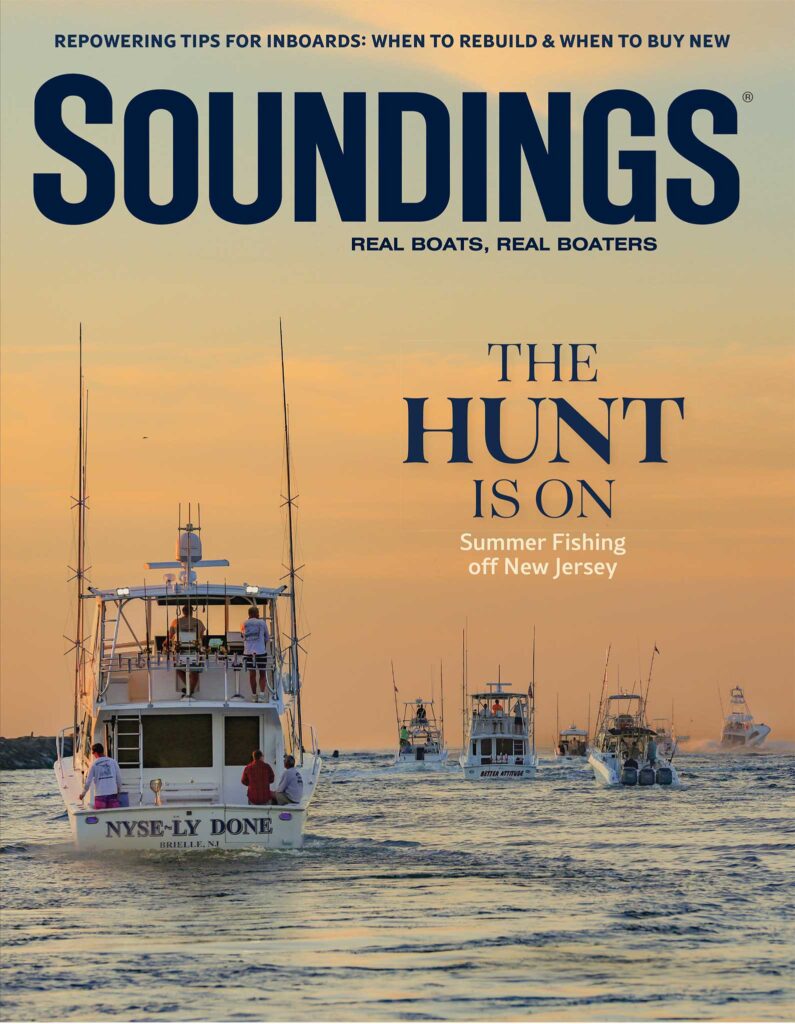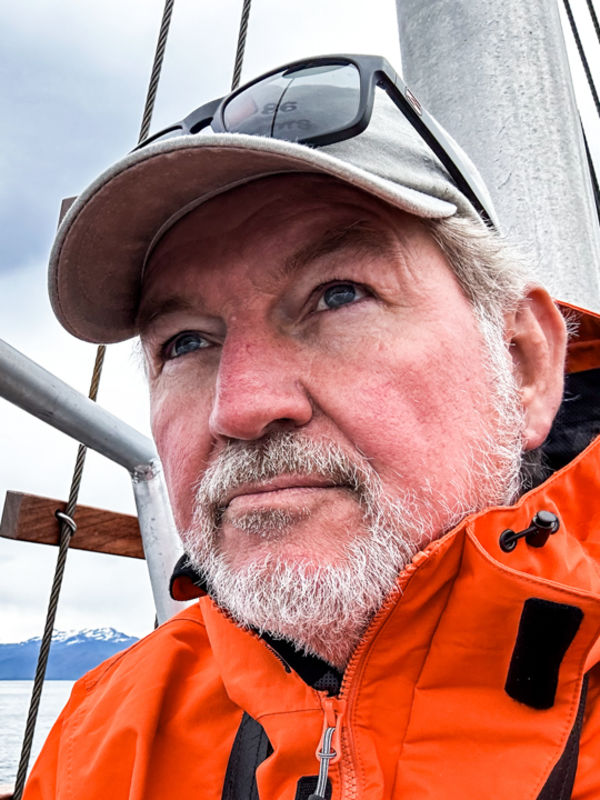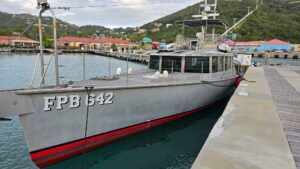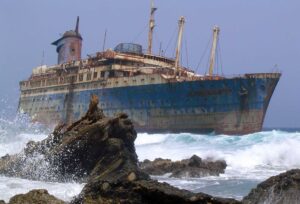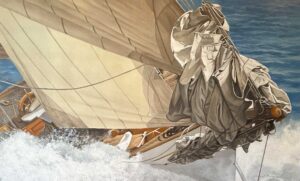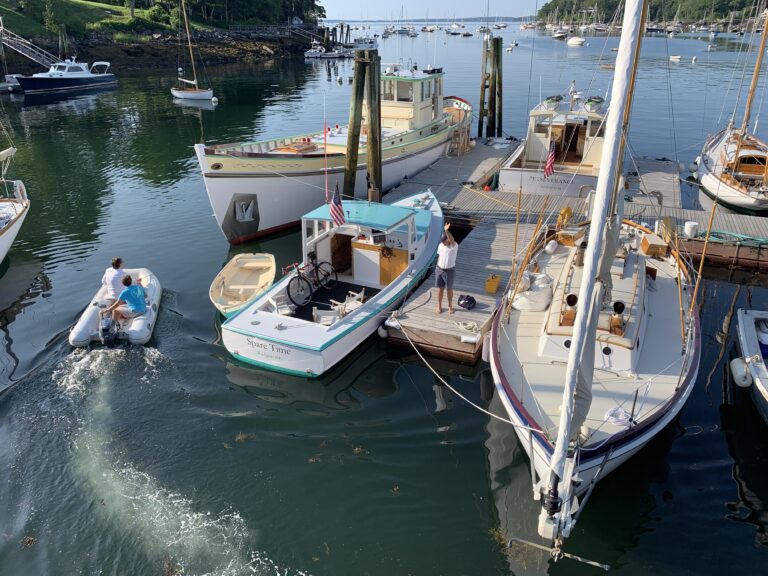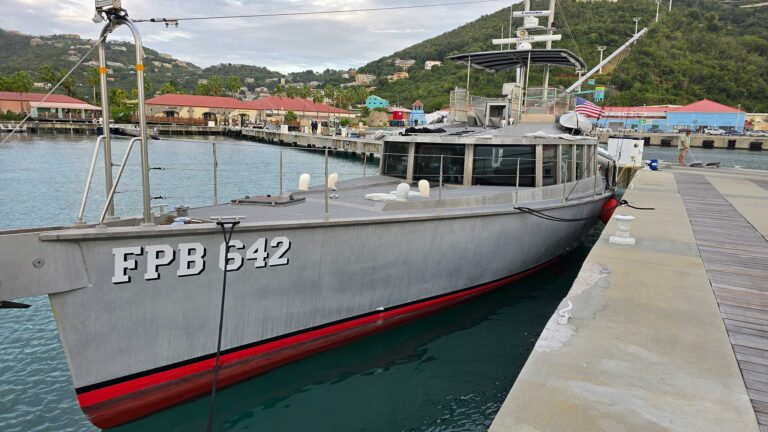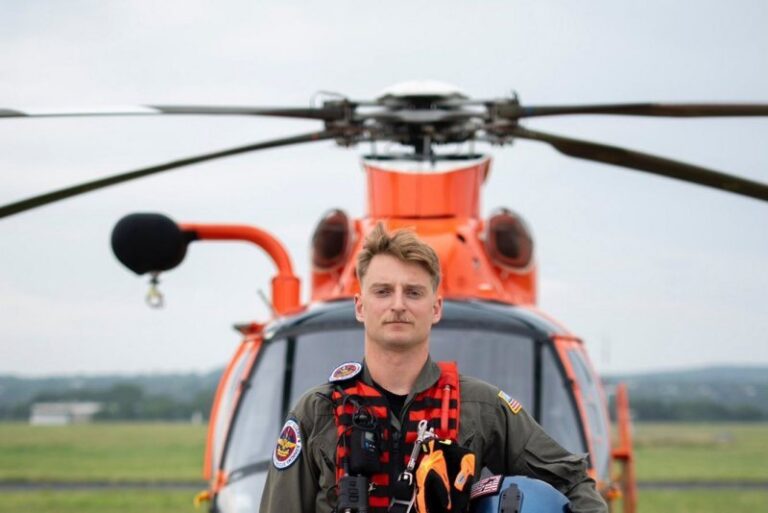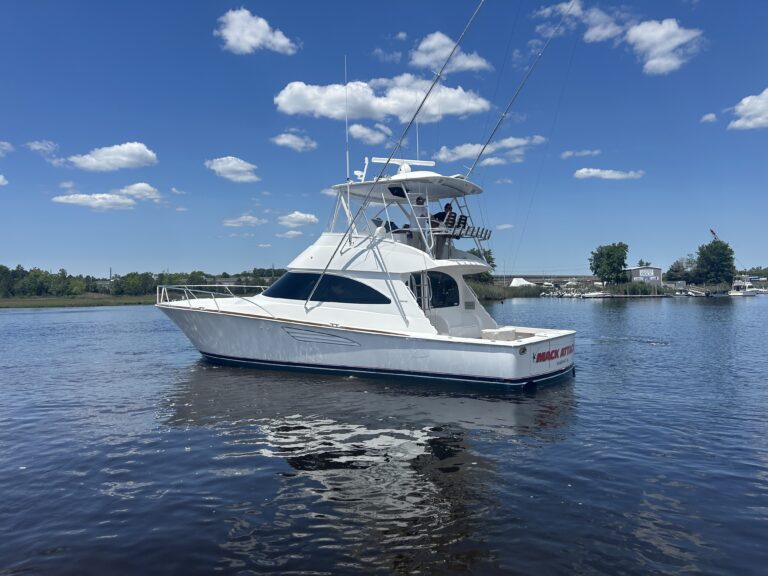If you love boats, and wooden boats in particular, there’s a good chance you’ve seen nautical photographer Alison Langley’s images and videos. But Langley doesn’t just photograph boats—she’s a self-described boat nut. She has a 25-foot Mako chase boat for work, but ask her what she’d like for her personal use and she’ll say it’s hard to choose just one. She likes the Herreshoff 12 1/2 “to go out for the day,” but wouldn’t mind a Grand Banks “for overnight trips,” or a Holland lobsterboat “because they run beautifully.” Langley is always looking at boats. “If I want to really get into it,” she says, “I get in bed with my laptop and look at Craigslist.” Her interest in boats is so keen that she recently received the 2021 Rebecca Chase Herreshoff Award from the Herreshoff Marine Museum. Known affectionately as The Becky, among other qualities, it is given to a person who has a passion for boats and being afloat. Soundings caught up with the 60-year-old photographer in Camden, Maine, where she’s been based since 2002.

Where did you grow up? My parents are both British. They first immigrated to Montreal, Canada, where I was born. We then went back to England before immigrating to the United States. My father was recruited to Florida—part of the “brain drain” from Europe to facilitate the space race. We eventually moved up to Concord, Massachusetts, where I spent most of my formative school years.
How did you get into photography? My dad always had an interest in photography and filmmaking. He worked for the BBC as an intern before studying electronic engineering. He gave my two sisters and me a Kodak camera when we were young, and I was hooked. He then gave me a Yashica twin-reflex camera; I spent a lot of time in the darkroom in high school. I dreamed of being a National Geographic photographer and traveling to faraway places.
How did you get into filmmaking? I always loved films. I studied filmmaking and photography at NYU, but a family crisis made me transfer to Rhode Island School of Design, where I focused on photography. While studying at RISD, I got the travel itch and went to Australia. There, I worked in the film animation business. In the early 2000s, when digital cameras made video an option, I took an editing course at Maine Media to learn how to make videos for my clients.
How did you get into boating? In Sydney I learned to windsurf and sail. I literally spent all my time boardsailing off Pittwater and sailing on friends’ boats whenever possible. My boyfriend and I then studied for our Yachtmasters certificate and we worked on a 130-foot brigantine called Eye of the Wind, which we sailed from Cairns to Fremantle for the America’s Cup. Then we got a job as crew aboard a Swan 651. We sailed around Australia and New Zealand, up through Melanesia and Polynesia to Japan, then down through Korea, Taiwan and Hong Kong. In Hong Kong, we got onboard an S&S Swan 57 and sailed through the Philippines, Malaysia, Borneo, Singapore, Thailand and then across the Indian Ocean to Africa. It was six years of cruising in total.

How did nautical photography become a career? During those cruises I wrote and sold stories to sailing magazines so that I could get my images published. After traveling through Africa in a Volkswagen Combie we returned to the U.S. so I could do photography full-time. While living in Providence, Rhode Island, Rob Johnson of Sail magazine told nautical photographer Onne van der Wal about the great stock imagery I had. At the time Onne owned a stock agency. I worked for Onne for four years and helped grow the business from 17 nautical photographers to 38, eventually becoming a partner. I loved seeing all the images come in from famous photographers around the world. When his work space became too small I suggested I move the agency to Portland, Maine, which is where I wanted to live. Onne agreed, but when the digital era arrived, Onne wanted to sell the business. That’s when I decided it was time to go freelance.
What made you want to move to Maine? I knew I wanted to move to Maine after I photographed my first Eggemoggin Reach Regatta in the early 1990s. It’s my favorite thing to shoot because the boats are so varied. Some years you have really big boats, but you always have the funky smaller ones. A lot of regattas leave out the small boat and the passionate guy that sails it. Maine is a Mecca for wooden boats, and Penobscot Bay has some of the best cruising grounds in the world. It’s also a great place to raise a family.
How did you develop your photographic specialty in wooden boats? My first boat restoration project was an Alden Schooner called Lions Whelp that I shot when I lived in Portland. I loved the curved symmetry and architectural lines that were exposed. I also loved learning about the build process and the history of the design. I would frequently drive up the coast of Maine so I could poke around the boatyards. When I finally went off on my own, I moved to Camden to be closer to the subject matter.
I was then contracted by owners to photograph the restoration of their Alden motorsailer at Rockport Marine. I documented the restoration for three years and produced a personal book for them. It was during this assignment that I started shooting at night in the yard—mostly so I could control the shots more with staging and lighting and not get in a builder’s way. It turned out to be a signature thing and led to other projects. I photographed Bequia, a Stephens Waring design that was built at Brooklin Boatyard; Anna, another Stephens Waring design built at Lyman Morse; and the NY40 Marilee, which was restored at French & Webb.

During the restoration of Marilee, another story started to unfold. The Hart Nautical Museum was launching a new online digital museum. I wanted to tell a bigger Herreshoff story, so I produced a 40-minute documentary and coffeetable book.
Who are your clients? I shoot commercial work for designers, builders, owners and yacht clubs. I also shoot fine art. I sell limited-edition prints. The black-and-white image I took of Shamrock V from the stern in 1992 became a bestselling poster worldwide.
What are you working on now that you’re excited about? Whirlwind II is a Gil Smith catboat that Artisan Boatworks in Rockport is building. It is based on Miriam, Gil Smith’s own catboat. The hull was completed last year. The rudder, tiller, mast, hardware and sails are next and I’m looking forward to shooting her under sail. One of the biggest things I’m trying to get off the ground are short videos and stories of the One Design classes, the Canadian, British and American designs that were commissioned by various boat clubs.
What gets you stoked? I’m excited to be exhibiting my work more and devoting more attention to fine art photography. I had a pop-up show with marine artist Russ Kramer at the Herreshoff Marine Museum’s Jubilee Gala and that’s given me a shot in the arm to create more.
What’s a great day like without photography? My twins are 17 now so there’s not much more time left as a family unit. Any time I get to spend with them is worth its weight in gold.
What makes for a great day as a photographer? The unexpected. I love heavy weather and big seas. If I see a storm coming, I’ll grab my gear and get out on the water—dark skies, stormy seas, high winds. I look for the drama in the lighting, including at sunrise and dusk, even in fog.

What qualities make for a great chase boat? Power, speed, lots of room to move around unencumbered. But the boat can’t be so big that a yacht would feel intimidated if you get close. I think I’ve worked on every crazy boat I can imagine. I’ve used a sailboat to chase another sailboat and I’ve used workboats with smelly fish buckets and slippery decks.
What makes for a great chase boat driver? People don’t realize what it takes to get in position for a good shot. I sometimes drive myself, but with all the lobsterpots it’s tough. Finding a good chase boat driver is difficult. These drivers need guts. When I say ‘get close,’ I mean get close. They have to do that when a boat is hauling ass because I want to be right there.

Which photographers inspire your work? I was first inspired by Henri Cartier-Bresson, who I studied at NYU. Among the nautical photographers, Carlo Borlenghi is amazing. I also like Christian Fevrier, but he doesn’t shoot anymore.
What is your favorite boat that you never tire of shooting? I have a crush on almost all Nat Herreshoff designs and also William Fife III. More recently I have taken an interest in catboats, because of the Gil Smith design.
Speaking of crushes, you spend a lot of time researching the boats you photograph. Why is that? If I’m going to put something out there I research the heck out of it first. A boat is an inanimate object, but it has a history, so you have to go to the Nth degree. I owe that to the audience, and the process makes me a better photographer.
This article was originally published in the January 2022 issue.

